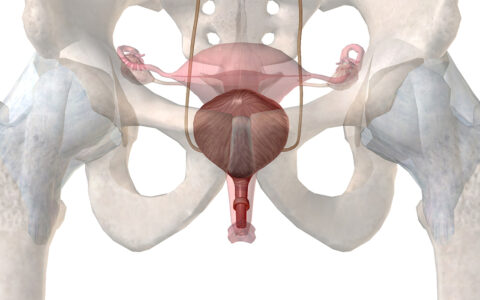Gestational diabetes mellitus (GDM) is among the most common pregnancy complications in the U.S., affecting up to 10 percent of pregnancies, and women with GDM have a sevenfold increased risk of developing type 2 diabetes mellitus after pregnancy. However, the underlying reasons why some women develop hyperglycemia are not fully understood.
Researchers at Vanderbilt University Medical Center plan to study genetics, obesity-type and ancestry as contributing factors in GDM development.
“We know the predisposition for gestational diabetes is influenced by multiple contributing factors,” said Ayush Giri, M.D., an assistant professor in the Department of Obstetrics and Gynecology at Vanderbilt. “A better understanding of these factors and the overlapping roles they play may help us identify personalized interventions.”
“A better understanding of these factors and the overlapping roles they play may help us identify personalized interventions.”
Examining the Obesity-genetics Connection
As with type 2 diabetes, obesity is a known risk factor for GDM. Few epidemiologic studies have evaluated the association between measures of visceral obesity and GDM, Giri says. “It is not clear if there is a stronger causal association between central measures of obesity rather than overall obesity in relation to GDM.”
Giri plans to develop an algorithm to validate GDM cases and controls from EHR data and evaluate the role of measured and genetically predicted maternal obesity in relation to GDM. A two-stage genomewide association study (GWAS) will use EHR-linked biorepositories, including Vanderbilt’s BioVU, and prioritize genes by incorporating gene expression data.
Giri hypothesizes that genetic markers of central (abdominal) obesity rather than general obesity are more strongly associated with GDM, and that variants across the genome influence GDM through regulation of tissue-specific gene-expression.
Despite growing evidence suggesting a genetic predisposition to GDM, only one GWAS of GDM has been conducted, in a South Korean population. “There have been a number of genetic studies on diabetes,” Giri said, “but if you look at the GDM literature, we are where we were 10 years ago. There’s been no GWA study in the U.S.”
A Deeper Dive into Ancestry
GDM prevalence varies by genetic ancestry, with the highest incidence occurring in Asian Americans, followed by Hispanic Americans, European Americans and African Americans. The disparity between Asian Americans (10.2 percent) and African Americans (4.4 percent) widens when considering GDM prevalence by body mass index (BMI).
No studies have examined whether disparities in GDM across self-reported race/ethnicity are rooted, at least in part, in genetic variation related to ancestry, Giri noted. In an ongoing analysis of national datasets, Giri and colleagues are finding that African Americans have the lowest prevalence of GDM across each strata of obesity than any other race/ethnic groups.
“This is intriguing,” Giri says, “especially considering that African Americans on average have higher BMI than Asian Americans or European Americans. It potentially suggests that the influence of obesity in Asian Americans is stronger than in African Americans.”
Focus on Hispanic Americans
Hispanic Americans represent a genetically heterogeneous group of individuals with varying degrees of predominantly Native American, European, and African ancestry. Since Native American descent is due to streams of Asian gene flows over time, Giri hypothesizes that a higher proportion of Native American ancestry in Hispanic Americans will correlate with higher GDM risk.
“If the race/ethnic disparities observed in GDM prevalence are rooted in part in genetic ancestry, and if we look at Hispanic Americans with varying degrees of ancestry, those with more African ancestry will have lower risk of GDM, while those with more Asian or Native American ancestry will have higher risk of GDM and type 2 diabetes,” he said.
Giri hopes the study will provide the foundation to scale up to more expansive research. “If we can identify a collection of genetic factors that increase your risk for GDM, then we can look at how these factors interact with modifiable factors such as diet, medication, and environment.”





